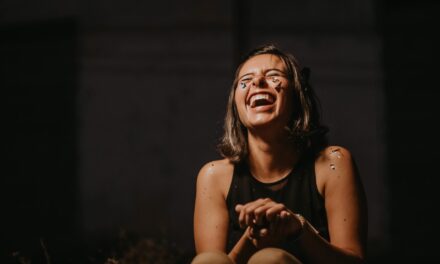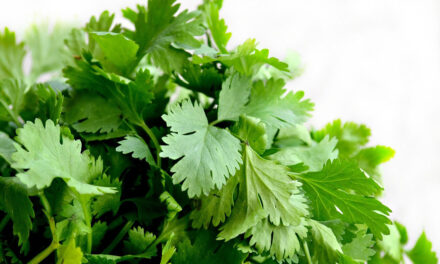Name: Von Martin
Kennel: Wolfie’s Call of the Wild Huskies
Birthplace: Oceanside, CA, USA
Current Residence: Lewis County, WA, USA
Occupation: Writer, Reporter, Dog Musher
Website: Wolfie’s Call of the Wild Huskies
Introduction To Our Musher
I would describe myself as a true dog lover with a particular passion for sled dogs and their roles throughout history. Today I am an emerging author of stories about sled dogs, a member of the Pacific Northwest Writer’s Association and the current Vice-President of the Northwest Sled Dog Association. I am graduate of the University of Hawaii where I was once an instructor in Anthropology. Throughout my professional life I’ve enjoyed exciting careers as a teacher, writer, reporter, carpenter, singer, and a musician. Then over the last several years my growing kennel of huskies and I began logging thousands of happy miles together on the trail throughout five western states, British Columbia and Alaska. These have truly been the best years of my life. Today I am lucky to be working and writing from my log cabin home in rural SW Washington state where I particularly enjoy caring for my extended “family” of sled dogs. My recently completed book, A Dog Called Shakespeare – Fallen Canine Hero of Shackleton’s 1914 Antarctic Expedition is my first installment in a planned series of books dedicated to the dogs of the early polar expeditions.
The Background of Our Musher
How did you get involved with the sport of dog sledding?
I was introduced to the wonderful world of sled dogs by a remarkable Alaskan Malamute named Wolfie who came into my life as a young pup and forever changed my life. She was the founding dog of my kennel and her death at age 12 was a terrible loss. Today her legacy lives on through a lifestyle dedicated to all my huskies and the sport of dog mushing.
Could you tell us about your first mushing adventure?
I’ll never forget my first mushing adventure. It was with Wolfie, my first Alaskan Malamute, on a one dog winter sledding trip near Mt Rainier National Park. We ran for miles through the woods along a beautiful wintery creek before the sun gloriously burst through the clouds, showering the snowy landscape with a with a sparkle and glow that took my breath away. I’ll always remember being there with Wolfie on that special day.
Who have been your biggest supports during your mushing years?
My wife Judy has always been my biggest fan and a great support to my passion for these magnificent dogs. Also my mom has pitched in to repair harnesses and gear, sew countless booties and even help look after the dogs now and then.
How long have you been addicted to mushing?
Nine unforgettable years.
What has been your greatest accomplishment in your dog sledding career?
Running the 2005 IFSS World Cup in Oregon was a thrill. I was honored to be running with so many talented mushers from around the world and to share the trail with their incredible dogs. But I would consider my greatest accomplishment to be the dogs I rescued from euthanasia at the County Animal Shelter that have worked out splendidly in my teams.
What is it about dog sledding that makes you enjoy it so much?
Time with the dogs is what I enjoy the most. They are each a best friend who share my enthusiasm and joy for being out on the trail. Whether its running in a race, or just working around the kennels, I enjoy the company of each of them immensely.
Maintaining a Kennel
How is your kennel set up?
I have a 24′ x 36′ kennel barn and an adjacent dog yard with swivel pickets which allows them to enjoy an indoor and outdoor lifestyle. Several enjoy regular free runs on the property and all the dogs enjoy the opportunity to socialize with one another.
How many lucky dogs currently enjoy your kennel?
Currently thirteen dogs. Four were rescues from the County Animal Shelter. Eight were adopted from local mushers who wanted to place them in new homes. One was a kennel purchase.
What is the feeding routine for your dogs?
Our feeding program includes a high quality chicken/rice based kibble and is supplemented throughout the year with fresh meat from a local butcher. We increase their intake of fat during peak training and winter racing as necessary to suit each dogs requirements. I also introduce the Champaine Race Diet during the peak months.
What is your kennel philosophy?
To make each dog’s experience the best it can be by maximizing it’s individual potential. I recognize each dog for it’s individual abilities and as a successful member of an integrated team. Mostly, I’m interest in creating a happy, rewarding lifestyle of work and play for all my dogs.
What is important to you when maintaining a kennel of working dogs?
Dogs that are socially well integrated is very important to me. Also maintaining each dog at its best potential physically, mentally, and emotionally, regardless of its age.
If I were a dog in your kennel, what would my day be like?
During off days the dogs are put into the dog yard during fair weather where they can socialize and safely enjoy the outdoors. During inclement weather they are sheltered in a cool and well ventilated kennel barn. They are fed at day’s end and retired to their cozy kennel building each night.
Working With the Dogs
What physical attributes do you try and produce in one of your average sled dogs?
Well conditioned but not too lean and who possess sturdy feet.
What breeds do you currently mush with?
Alaska Huskies (9), Siberian Huskies (3), Alaskan Malamute (1)
What is the demeanor like in all of your sled dogs?
Happy, confident, and very people friendly.
Please describe your vision of the perfect sled dog.
My perfect sled dog would always be excited to see me and always anxious to go, no matter what circumstances prevail. They would be confident, happy, and not easily discouraged. An ideal dog would maintain a tireless steady pace, offer encouragement to its teammates, and possess a sixth sense about things. They would be a good eater able to maintain weight under demanding conditions, carry a medium coat and possess indestructible feet!
Training: The Hard Part
What is your way of thinking when it comes to racing and training?
I try to make each run a success for the dogs and always make a fuss over good performances. If things don’t go well, I examine how well I managed the run. I also let go of past mistakes and try to stay “in the moment” – something I learned from my dogs.
Could you describe your yearly training program?
We train with a gig on rural logging roads beginning in late September or early October as temperatures cool. We switch to sled training in December two or three times per week with increased mileages and challenging terrain. The dogs are ready for their first snow race in early January and usually hit their peak conditioning by mid February.
What tools are most important to you when training your sled dogs?
Reliable transportation and dependable training gear for the team is an absolute necessity. Sturdy snub and ganglines are important and water on the trail particularly during Fall runs. I never leave the truck without extra dog booties, necklines, etc. On longer runs I include emergency gear and extra mitts, hat, etc; for myself. I also make sure someone knows what trail system I will be on before leaving home and when I’m expected back with the dogs.
What are your training goals each year?
To bring out the very best in my dogs. And to let them bring out the best in me.
Racing: Oh Glorious Racing!
Do you race? If so, what races?
We have raced throughout Washington, Oregon, California, Wyoming, and British Columbia in classes ranging from 12 Dog Distance to 4 Dog Sprint classes. Some of my favorite race events have included the Cascade Quest and the Snow Dog Super Mush in Washington, Chemult and Frog Lake in Oregon and a race on Casper Mountain in Wyoming. That Wyoming race can get pretty cold but the dogs loved it.
What are your goals during the racing season?
My goal each season is to train each dog to achieve the very best it is capable of for that particular year. My race agendas change from year to year as I match the capabilities of my dogs with the right events for that season.
Could you tell us about your first race?
My very first sled race was a freight race event. One dog, one weighted sled, and myself. It was staged in the Washington Cascades and it snowed very hard throughout the event. Even so, I worked up a big sweat. My dog was Wolfie, my heavy boned Alaskan Malamute. My first “sprint race on snow was with two borrowed Alaskan Huskies named Buzz and Jimmy. They were older but capable lead dogs loaned to me by good friends for the event. By comparison to the freight race, I felt like I was flying.
How do you decide which dogs make the race team?
My dogs are placed into race events based upon their capability, i.e. speed, endurance, age, and what I call the go factor. I try to give each dog a shot at one class or another sometime during the year.
If you could, what are your racing strengths and weaknesses?
I think one of my strengths is my willingness to learn. I don’t believe this is a sport you can absolutely master, no matter how long you are in it. Just when you think you’re getting it all down, something unexpected happens and you say to yourself, “Man, I never saw that coming!” Every day on the trail is a unique experience. I will confess I have a weakness (and a special fondness) for my senior dogs and have sometimes favored them in a race, even when it meant sacrificing a well placed finish with younger dogs.
How do you decide which races you will be entering during the racing season?
I work with a financial budget for each season and select race venues that match our agenda and abilities from season to season. Some years we strive for a Championship. Other years we have just enjoyed running at favorite events and having a really good time on the trail.
What Does the Future Hold?
What do you hope to accomplish with the dog sledding sport?
My greatest ambition is to give each of my dogs the life they were born to have. In an era of high technology and fast paced living, running dogs is a wonderful opportunity to preserve an ancient tradition, as well as to foster the value of human/animal kinships, and maintain a connection to our natural environment.
What changes do you hope dog sledding makes in the near future?
I am hopeful that dog sledding will someday work its way into the IOC as a sanctioned Winter Olympic event. I believe it would help to promote an even more positive public perception of sled dogs as working animals that love their work and their relationships with their human athlete counterparts. My biggest dream for dog sledding is that huskies will one day be allowed to return to the Antarctic continent and carry on their extraordinary historic legacy.
To the beginning musher, what advice would you give?
Get a good, reliable lead dog, even an older one is OK. They will teach you more than you can imagine and can help you out of a tight spot when learning the ropes. A good leader will make your experience safer and more rewarding. There is no substitute for a good lead dog. Also, never blame any dog for your problems or mistakes.
If mushers were to do something to perpetuate the dog sledding sport, what would that be?
Public perception of dog mushing has a lot to do with how people see dogs treated by their owners. Be a responsible musher and take the greatest possible care of your dogs. The sight of happy, well socialized dogs by the public is a reassurance that these dogs are truly living the lives they were born to have.
Anything else for the mushing community to hear?
Life is precious and short and especially so for dogs. Enjoy the trail and your journey together. Cherish every single day with your very special canine best friends.





